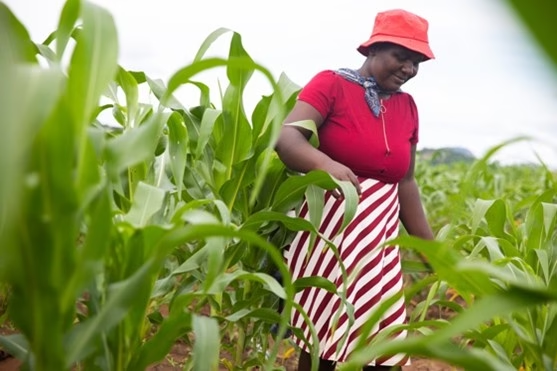
Smallholder farmers in Zimbabwe have always formed the backbone of rural survival, yet their contribution to national and global markets has remained marginal. Limited irrigation, weak market linkages, and vulnerability to climate shocks have kept many tied to subsistence production, struggling to break into competitive value chains. That narrative is beginning to shift, as more than 350 smallholder farmers in Manicaland, Masvingo, and Matabeleland South are being connected to global markets through the Climate Resilience Livelihoods project, supported by the Government of Zimbabwe, the Green Climate Fund, and the United Nations Development Programme.
At the heart of this initiative is an effort to unlock potential long constrained by structural barriers. Irrigation schemes powered by solar energy and drip systems are not just increasing production but also building resilience against erratic rainfall. Market linkages facilitated through partnerships with buyers, input suppliers, transporters, and financiers are addressing one of the greatest hurdles smallholders face — access to consistent and fair markets. For the first time, farmers accustomed to producing for survival can envisage a pathway into global trade, with prospects of earning meaningful income from their land.
The approach is striking for its integration. Rather than treating farming as an isolated activity, it positions smallholders within a broader value chain ecosystem. Learning days and community-level training help farmers understand not only production techniques but also quality control, certification, and packaging standards demanded by international buyers. This shift reframes smallholder agriculture from subsistence farming to commercial farming, empowering rural producers to claim a space in global trade.
Equally significant is the deliberate inclusion of women. In Zimbabwe’s rural communities, women carry much of the farming burden yet face entrenched disadvantages in land ownership, access to finance, and decision-making. Ensuring their participation in irrigation schemes and market platforms strengthens both gender equality and household resilience. By targeting women farmers, the programme recognises that transformation must be inclusive if it is to be sustainable.
Yet the challenges ahead are formidable. Connecting to global markets is not only about producing more; it is about producing consistently, at scale, and to international standards. Infrastructure must be maintained, supply chains secured, and farmers continuously supported with extension services. Climate risks also remain, as irrigation does not shield communities from pests, extreme heat, or floods. There is a danger too that if commercialisation accelerates unevenly, better-resourced farmers could benefit more, leaving the poorest behind.
Despite these risks, the initiative aligns well with Zimbabwe’s Vision 2030 and the National Development Strategy 1, both of which emphasise inclusive economic growth and climate resilience. It demonstrates how climate finance, public-private partnerships, and grassroots mobilisation can converge to create opportunities previously unimaginable for rural farmers. The symbolic power of moving from growing for survival to producing for international markets cannot be underestimated; it marks a shift in identity, dignity, and aspiration.
For Zimbabwe, this project is more than a farming programme; it is a test of whether systemic barriers in agriculture can be dismantled through innovation and collaboration. If sustained and expanded, it could redefine smallholder farming from a fragile livelihood into a competitive enterprise, embedding resilience while opening doors to the world. For the 350 farmers who now stand at this frontier, the journey from subsistence to global markets signals not just a change in income but the possibility of breaking cycles of poverty that have endured for generations.




